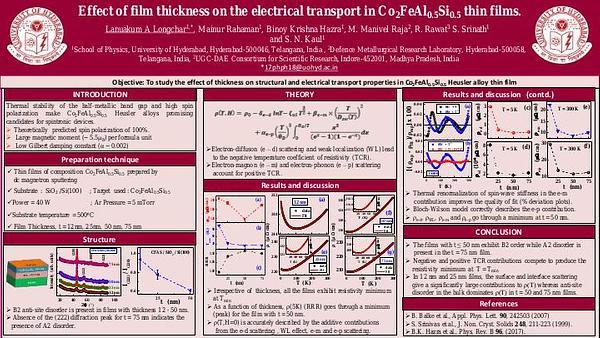Would you like to see your presentation here, made available to a global audience of researchers?
Add your own presentation or have us affordably record your next conference.
Researchers are attracted to antiferromagnets due to their high frequency dynamical properties with a possibility of developing terahertz frequency range spintronics devices. We use magnetic multilayer heterostructures consisting of successive ferromagnetic layers separated by a non-magnetic metal of suitable thickness to have an antiferromagnetic coupling. These structures are called synthetic antiferromagnets (S-AFM). We use permalloy as a ferromagnetic material and ruthenium as a non-magnetic metal to prepare tetralayer synthetic antiferromagnets. We theoretically predict and experimentally verify the existence of two types of magnon-magnon couplings for antiferromagnetic magnons localized on surface and interior layers of tetralayer synthetic antiferromagnet. Macrospin modeling and micromagnetic simulations are used to show that the dynamic part of Ruderman–Kittel–Kasuya–Yosida (RKKY) interaction is responsible for the self-hybridization of acoustic and optical magnons localized on surface and interior layers due to an accompanying field-like torque. Likewise, surface optical magnons hybridize with interior acoustic magnons by spin pumping, which creates antidamping torque on neighboring ferromagnetic layer. It is reflected in the double-gap in magnon spectrum, that is, an additional magnon-magnon interaction is observed. Thus, interlayer spin pumping is a magnon-magnon interaction control mechanism in in S-AFMs that can be used to help develop energy efficient and high-speed spintronics devices. Research at University of Michigan was supported from NSF CAREER grant DMR-1847847. Work at Oakland University was funded by NSF under award number ECCS-1941426, and that at University of Delaware was supported from NSF grant DMR-2011824.
